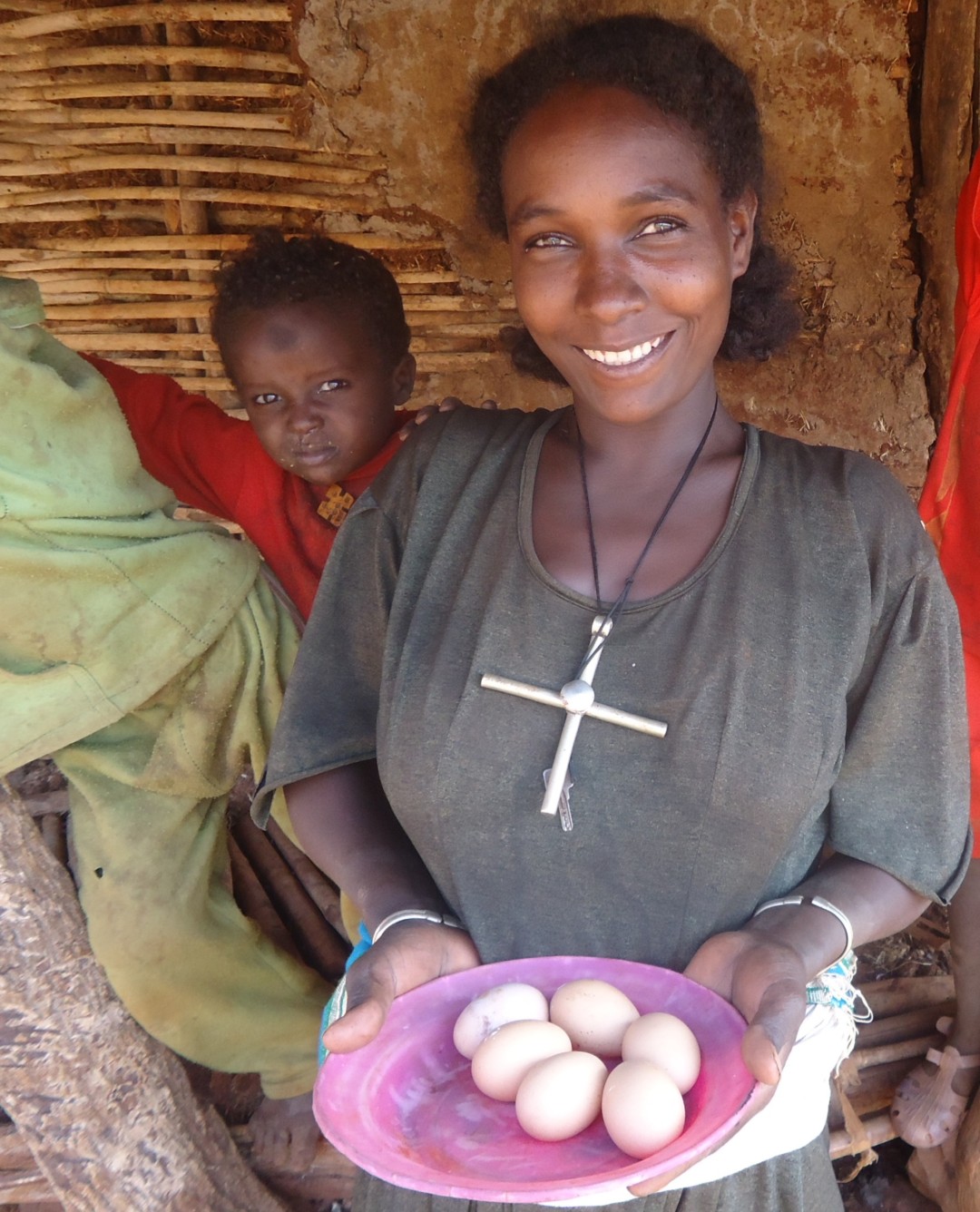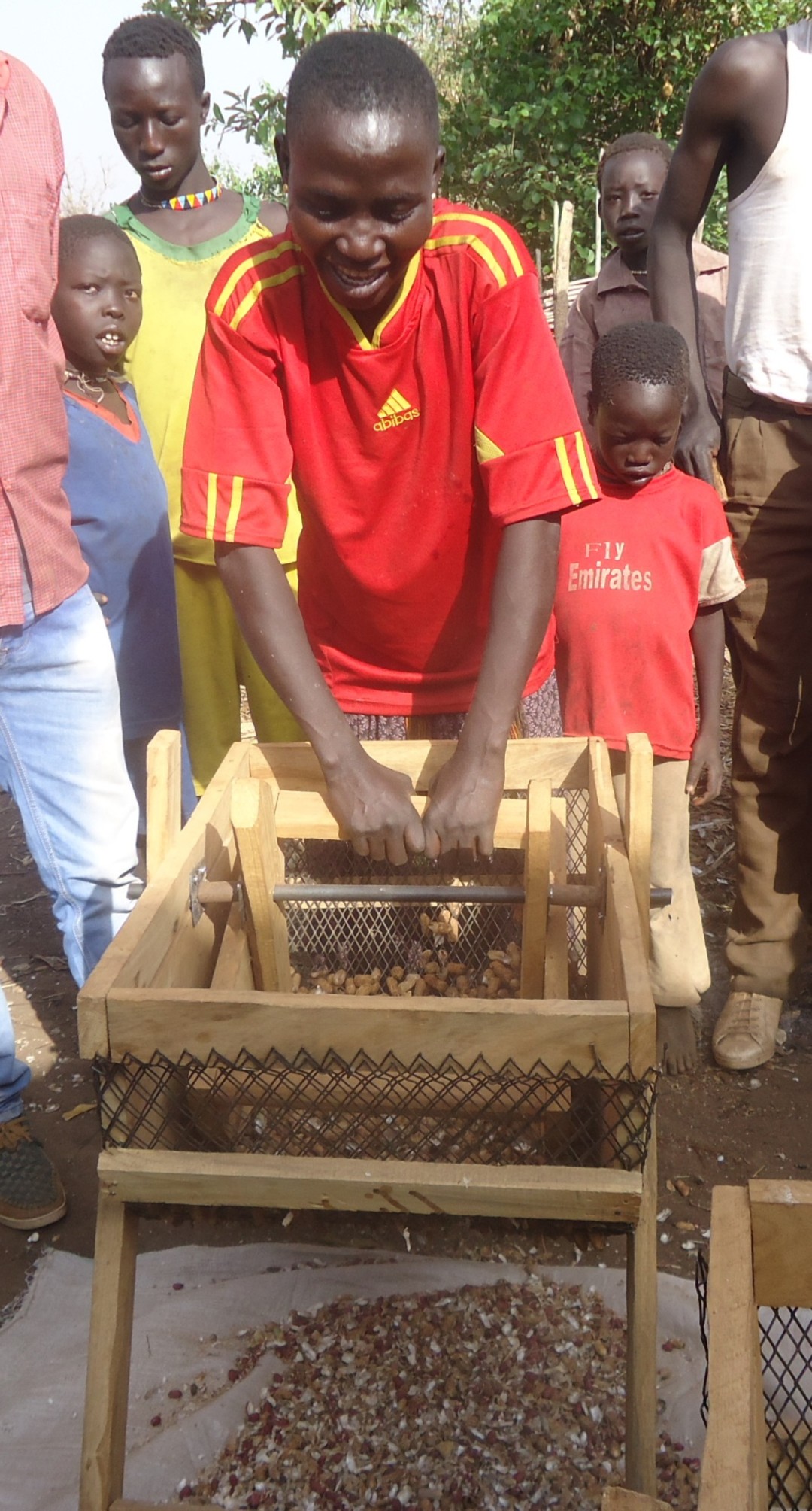Strengthening food security
The project aimed to strengthen the food security of 378 farming households, in the Dibate district, by favouring the participation of women, a vulnerable population in the region. The project, which aimed to indirectly reach 756 additional households, involved creating seven Farmer Field Schools (FFS). The three main objectives were to increase agricultural productivity, to increase revenues from new activities (poultry breeding or bamboo plantations), and to improve the nutritional level of the households concerned thanks to improved conservation of local products.
By the end of the project, 420 households had directly benefitted from the activities led by CPAR. Average agricultural productivity improved by 250% for female farmers and 230% for male farmers. This progression was due to the application of new knowledge and skills, in particular new crop production techniques, improved seed quality and seed multiplication. Increased crop production directly contributed to enhancing household food security and nutrition, while at the same time reducing childhood malnutrition. Thanks to the project’s support of income generating activities targeting women, they were able to increase their earnings, on average, by 72%. This also contributed to enhancing their economic and social status.
Founded in 1984 by Canadian doctors, Canadian Physicians for Aid and Relief (CPAR) works closely with the most vulnerable communities in Africa.
News
Testimonials
Eggs for Sale!
"My income greatly improved from raising chickens and this has reduced tensions in my family caused by a lack of enough money during hard times," said Ashiko. "Now we are able to manage through the tough times because there is at least money to buy food to eat even if crop production is not enough."Achieving food security via cassava
Read about Denbesie who said "Cassava is so productive. The yield is high per small plot of land, simple to cook and easy to store. I have enough in my stock now for the family. All together the household has enough now to eat. "Vegetables for income and nutrition
"I am so proud and very happy to have joined the Farmer Field School (FFS). I diversified the family's food and am making money from selling vegetables. The money I make from those sales is really substantial. With this income, I have a plan to construct a new house", says Geletie.Improved seeds strengthen food security
“Every June, I worried that we didn't have enough food. I have enough now to last me throughout the year. I don't worry about what I will eat when June comes anymore," declared YekugeType
Community DevelopmentDuration
October 2013 - September 2016Location
Dibate District / EthiopiaWith whom
Canadian Physicians for Aid and Relief (CPAR)
Website


Ethiopia
Population
105 million (2017)
Per Capita Income
USD 740/year (2017)
Poverty rate *
23% (2015)
Literacy rate
39% (2016)
Human Development Index
173rd out of 189 countries (2018)
Ethiopia is the second most populated country in Sub–Saharan Africa and one of the world’s poorest countries. Although economic growth is hindered by chronic food insecurity, it has enabled positive trends in reducing poverty, in both urban and rural areas. The absolute poverty rate dropped from 46% in 1995 to 8.7% 2016. Over the past 20 years, primary school enrolment has quadrupled, child mortality has been halved and access to clean water has doubled. Good progress has also been made in the fight against malaria and HIV/AIDS. The country is home to the largest refugee population on the continent (730,000 registered refugees), putting additional pressure on natural resources suffering from climate-related shocks.
Sources: World Food Program, UNICEF, World Bank, 2016 Human Development Report, Human Development Indices and Indicators (2018 Statistical Update)
*The percentage of the population living below the national poverty line.